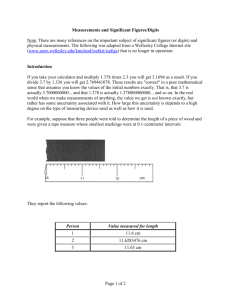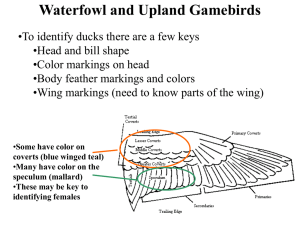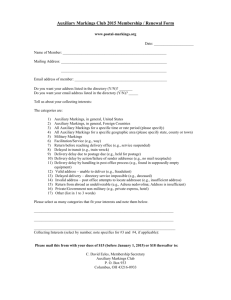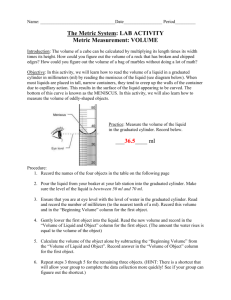Reading Graduated Cylinders: Accurate Measurement Guide
advertisement
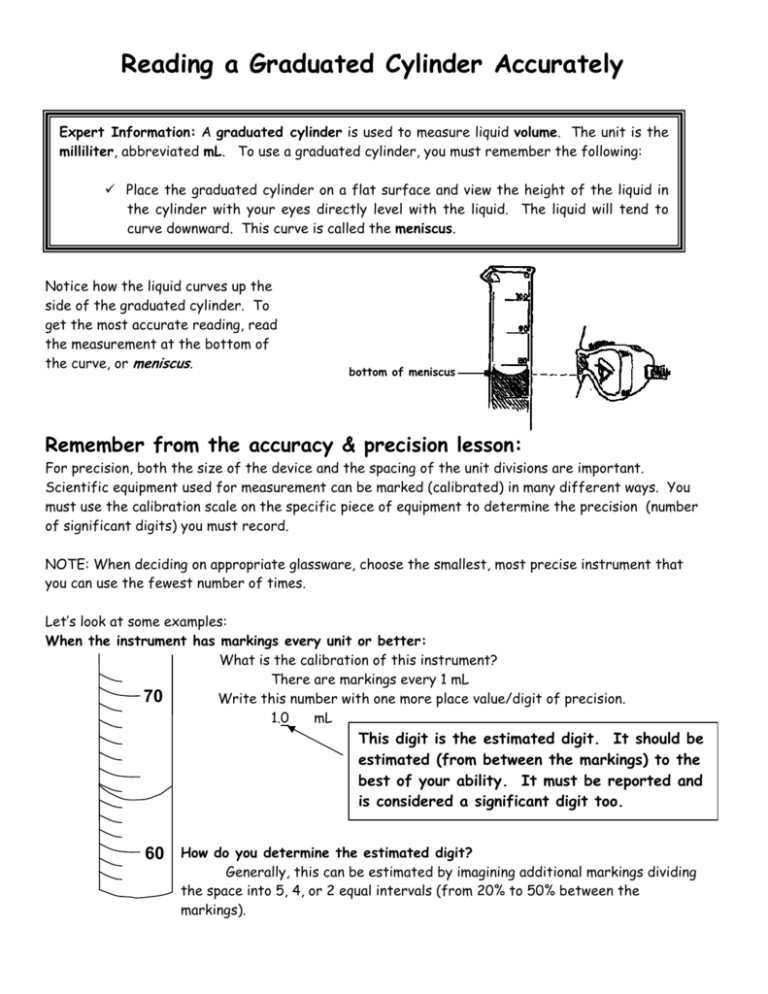
Reading a Graduated Cylinder Accurately Expert Information: A graduated cylinder is used to measure liquid volume. The unit is the milliliter, abbreviated mL. To use a graduated cylinder, you must remember the following: Place the graduated cylinder on a flat surface and view the height of the liquid in the cylinder with your eyes directly level with the liquid. The liquid will tend to curve downward. This curve is called the meniscus. Notice how the liquid curves up the side of the graduated cylinder. To get the most accurate reading, read the measurement at the bottom of the curve, or meniscus. bottom of meniscus Remember from the accuracy & precision lesson: For precision, both the size of the device and the spacing of the unit divisions are important. Scientific equipment used for measurement can be marked (calibrated) in many different ways. You must use the calibration scale on the specific piece of equipment to determine the precision (number of significant digits) you must record. NOTE: When deciding on appropriate glassware, choose the smallest, most precise instrument that you can use the fewest number of times. Let’s look at some examples: When the instrument has markings every unit or better: What is the calibration of this instrument? There are markings every 1 mL 70 Write this number with one more place value/digit of precision. 1.0 mL This digit is the estimated digit. It should be estimated (from between the markings) to the best of your ability. It must be reported and is considered a significant digit too. 60 How do you determine the estimated digit? Generally, this can be estimated by imagining additional markings dividing the space into 5, 4, or 2 equal intervals (from 20% to 50% between the markings). Back to the previous example. From the markings, we know for certain that the volume is greater than 63 mL but less than 64 mL. Therefore, we need to imagine equal markings between the 63 mL and 64 mL marks. If you imagine only 1 mark between them, the meniscus appears to fall on that mark. This would be ½ or 0.5 additional mL. The volume should then be reported as 63.5 mL. 70 Now, what if the meniscus was here instead? Everything up to the estimated digit is the same 63 mL … but the meniscus clearly falls above the imagined half way mark. So imagine the space between the markings divided in 4 or 5 equal parts. 64 Divided into ¼’s Volume is 63.75 mL 64 Divided into 1/5’s volume is > 63.7 mL but < 63.8 mL 60 63 63 Since this estimated digit can be only 1 place value beyond the markings, it must be rounded to the 0.1 (tenths) place. Therefore the volume could be reported as 63.7 mL or 63.8 mL. Either answer is acceptable. When the instrument does not have markings every full unit, but instead by some multiple of the unit like 2’s, 5’s, or 10’s: 20 10 What is the calibration of this instrument? There are markings every 2o Because of this, each 1 degree between the markings must be estimated. This is the estimated digit. Your measurement should not report any digits beyond the precision of this digit. Instruments that are calibrated in this way are less precise than those that have markings every degree. The reading from this thermometer would be correctly reported as 19 o …since the “9” in the ones place was estimated. Nothing beyond the first estimated digit can be reported. ☺



